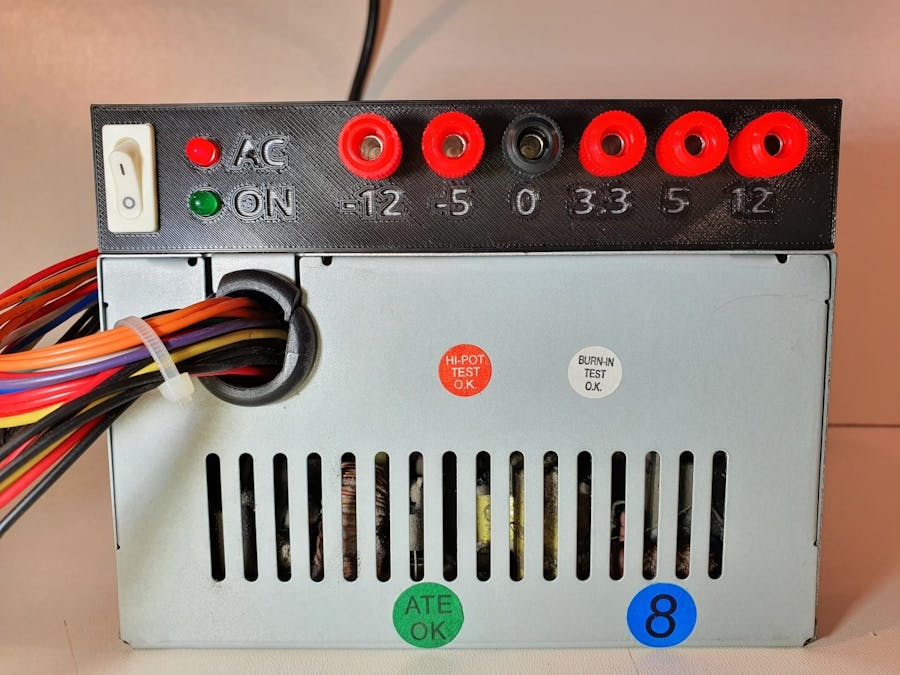Computer waste is a part of the increasing e-waste problem. If you have computer parts that are still operable, recycling parts such as an old ATX power supply helps to reduce the amount of e-waste and is a fun DIY project.
You'll need : A 3D Printer to print out the Panel. An old ATX supply, 6 Banana-sockets (standard size for panel mount), switch, 2 standard 5V LEDs+330Ohm Resistors
I used the outside wires from the long ATX connector which go to the banana terminals and did not need to open the case. I also left two 4-pin "P4 connectors" in case I want to connect any PC hardware (fans, drives etc) later.
The panel is 150mm wide which seems to be a standard size, but yours might be different. The same applies to the srew holes which hold the panel on top of the power supply.
Regarding the wiring, refer to the many available tutorials online (instructables etc). This is just a short summary :Common ATX connectors have 20 or 24 pins. The color coding is standardized (see chart below).
After the power supply is switched off and completely discharged, cut the wires from the connector, group them and solder to the terminals as shown below :
- Yellow: +12V
- Red: + 5V
- Orange: +3.3V
- Black: 0V (GND)
- White: -5V
- Blue: -12V
- The green wire is used to turn on the power supply. Connect this to an ON/OFF switch (connect the green line to ground, one of the black wires).
- The purple wire provides a +5V standby signal when the power supply is connected to the wall socket. I used this line to indicate "AC on" with a red LED and a 330 Ohm resistor.
- The gray wire signals "Power Good / On" by providing +5V when switched on. I used a green LED and a 330 Ohm resistor to indicate the output terminals are enabled.
Notes : - Disclaimer: Electricity can be dangerous! There are large capacitors in ATX power supplies that will store a dangerous charge for a long time. Let your power supply discharge before altering any connections or opening.!! IF YOU ARE NOT SURE OF WHAT YOU ARE DOING - DO NOT ATTEMPT THIS !!- Some ATX power supplies require a small load to stay in the ON mode. Add a 10 ohm, 10 watt resistor between +5V and ground to provide a small load if needed. In my case, the built-in fan consumed enough power alreday. But that depends on your model.- It's safer to put fuses on all signal lines which I didn't bothered to do, but still highly recommended.- the minus 5V line (white) is not always present (omitted on newer models)











Comments
Please log in or sign up to comment.